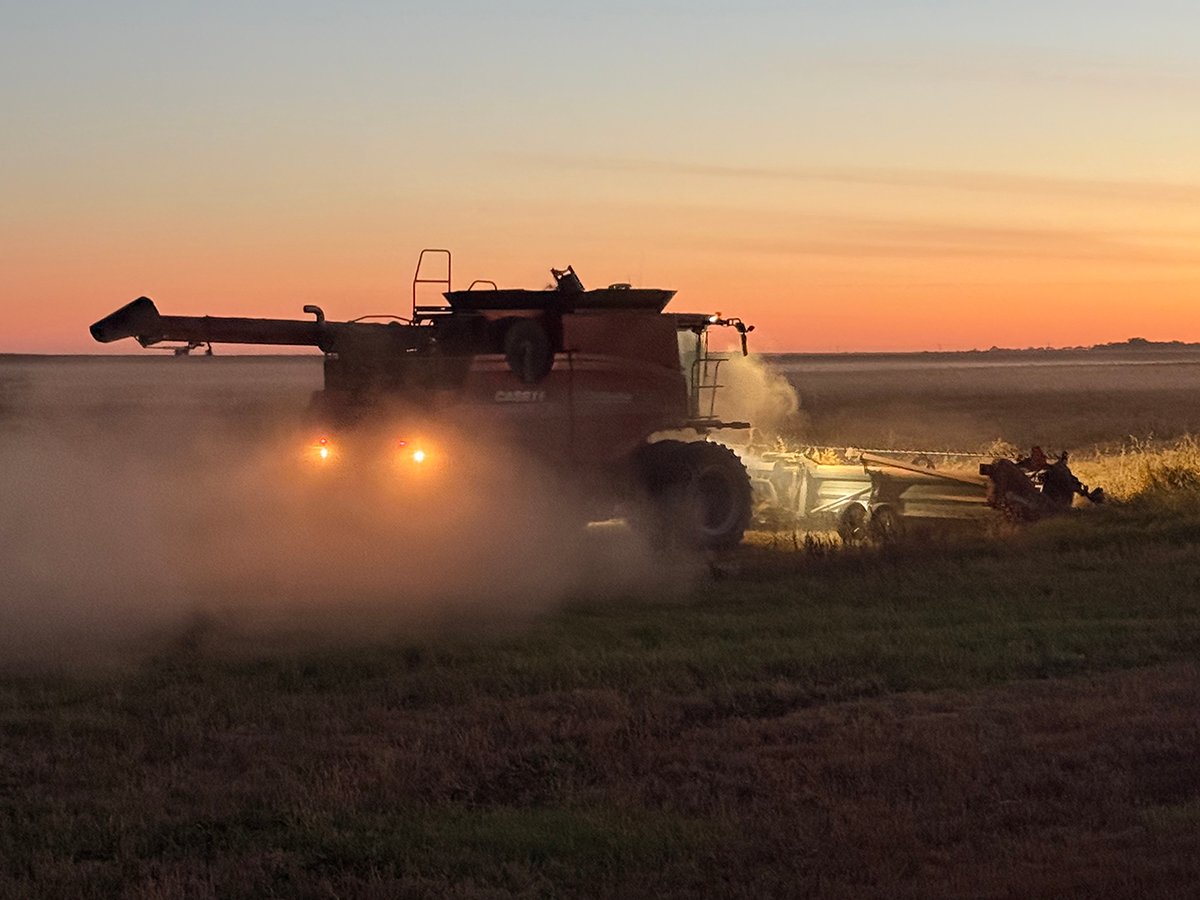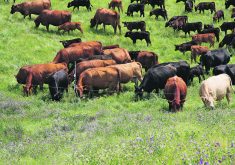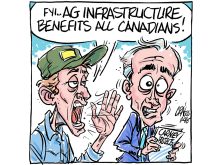Fertilizer truths; Lotto payouts; True colours; Lentil prices; Only the big; Uranium worry; Wild boars; Failing strategy
Fertilizer truths
Potash Corp. president and chief executive officer Bill Doyle’s statements in your publication, (WP, April 30), “Possible fertilizer reduction worrisome” are the farthest from the truth as you could get.
The drop in fertilizer usage is true but for one reason only: price. Summer of 2008 fertilizer prices shot through the roof, for one reason: demand.
Big corporate philosophy is to charge all that the market will bear. Demand was high, actually outstripping supply. We saw potash go from $310 per tonne in March 2007 to a high of $1,100 per tonne in the summer of 2008.
Read Also

Downturn in grain farm economics threatens to be long term
We might look back at this fall as the turning point in grain farm economics — the point where making money became really difficult.
Phosphate fertilizer in March 2007 was $445 per tonne and went to a high of $1,400, levelling off at $775 this spring. Since 2007, that is only a 75 percent increase. Not bad, eh?
Nitrogen fertilizer from March 2007 at $430 per tonne went to a high of $1,000 and back down in spring 2009 to $575. That was only a 33 percent increase in two years.
Sulfur fertilizer from March 2007 of $360 per tonne to today’s price of $475. This increase is only 32 percent.
Unfortunately, some of us got caught up in the escalating prices in the summer of 2008. These corporations were jacking their prices and putting the fear of God in us by saying the price is only going to go higher.
Fertilizer retailers were threatened to buy now (summer) or we can’t guarantee supply. It’s amazing how fear feeds on fear.
Thank goodness they weren’t right. There is no shortage and prices have come down some.
Cost of production has nothing to do with corporate decisions when world prices are high and supply is low. I won’t single out Potash Corp. because our entire farm input corporations do it. But I will criticize and laugh under my breath at the statements made by Bill Doyle….
Some major price correction is still needed. Potash went from $310 per tonne to $975 per tonne. That is still a 215 percent increase in two years.
These kind of figures sure look good to shareholders in Potash Corp., but guess what?
Your demand has dropped off to the point of closing plants. I as a farmer am not buying potash this year, and reducing other inputs.
Our philosophy along with a lot of farmers is that we can skip a year or two or at least cut back without significant yield loss. I think this is a farmer’s way of saying we don’t appreciate price gouging.
Mr. Doyle, your comment, “dropping the price does not increase demand on fertilizer products, it only destroyed value for those company’s producing those products.” Guess what, we will buy potash again, but when the prices get back to reality. …
This was a greedy corporate decision. Let the people that work the mines get back to work. Look at your cost of production and be realistic about what the price of potash should be.
We will buy potash again, but for now this is our way of saying you’ve priced yourself out of the market.
– Craig Lindholm,
New Norway, Alta.
Lotto payouts
I have read letters and talked to people who think the 6/49 lottery is fixed. I think so too.
First off, the big ones are mostly all won in Eastern Canada. There are very few won in Western Canada and they are small ones, mostly the second prize.
If you’ve ever been to a casino, all the machines are computer run. They can make a machine never pay, which most are set that way.
So what stops the 6/49 corporation to control where the payouts go? They can tell where the ticket was bought so why can’t the computer be controlled to where the payout goes?
A computer generated draw is not the way to be honest. The only way is a mechanical machine to make the draw on national TV for every draw so people can see. Then we’ll believe it’s honest.
Heaven knows the corporation has enough money to do this, as they raised the price of a ticket to $2 for less wins.
– Albert Schryvers,
Quill Lake, Sask.
True colours
The Liberals recently held a leadership meeting in Vancouver where the self proclamation of Michael Ignatieff unfolded.
Only minutes after his friends from the eastern media had finished patting him on the back and returned to their cameras, his true colours began to emerge. A hue of Ontario maple red crimson began to appear above his head.
Ignatieff is proposing changes to Canada’s Unemployment Insurance Act. Iggy has all but told us that if the Harper Conservatives don’t go with Liberal UI proposals, they may take the minority government down shortly after the fall session of Parliament.
Ontario is about to be hit by further layoffs from Chrysler and GM. It’s impossible to know how many voters, oops, workers will be affected, even worse if GM capitulates.
It’s interesting to note that throughout the 1990s,when Jean Chrétien’s agricultural policies caused massive layoffs on the Prairies, the only UI reform we got is that the Liberals changed the name and made benefits harder to obtain.
And there was no need for UI reform when softwood export conflicts arose with the Americans, as B.C. forestry workers went on pogey.
Was there UI reform when east and west coast fishers were laid off because the Chrétien government had neglected coastal naval patrols, allowing foreign fishing trawlers to run freely in our waters?
Now Ontario is being hit, and we need a new government, and a new Unemployment Insurance Act. The more things change, the more they stay the same.
– John Hamon,
Gravelbourg, Sask.
Lentil prices
Green lentil producers, are you tired of having to fight for every cent when you are marketing your lentils? Here are some examples of how we have been treated by line companies.
All Commodities: Our contract was for No. 1 at 40 cents per pound and No. 2 at 38 cents. They were graded at No. 3 with 10.48 percent dockage.
We received .23 cents per lb. The Canadian Grain Commission graded that load No. 2 with 3.9 percent dockage.
Lakeside Global: Our contract was for No. 2 for 28 cents and Extra No. 3 for 26 cents. Lakeside verbally told us they were No. 2 with two percent dockage, which was fair, and sent a cheque for Extra No. 3.
CGC graded that load No. 2 with 3.2 percent dockage.
Walker Seed: We needed money so we signed a contract for Extra No. 3. Walkers gave us Extra No. 3 but hit us with 14 percent dockage to bring it up to an Extra No. 3 even though CGC graded that load No. 2 with 7.2 percent dockage.
We are wondering if other producers of pulses are being affected by downgrading and dockage.
The federal government needs to pass legislation which will make our lentils subject to CGC inspectors’ grade and dockage in the event of a dispute. The line companies should have the same rules as grain elevators.
We need to alert our MLAs and members of Parliament of this problem. I strongly urge you to contact our governments so this problem will not go unnoticed.
– Sandra Yonge,
Central Butte, Sask.
Only the big
Reading Henry Vos’s article “We need CWB election reform,” (Opinion, May 7), ‘ one gets the impression that only large farmers and young farmers should be entitled to vote in Canadian Wheat Board elections.
Apparently the rest of us always vote the wrong way or make poor decisions.
It would be nice if Henry had just admitted up front that the real reason he is suggesting changes is to get more anti-board directors elected so that barley can be removed from the board.
I have been around long enough to see many large and young farmers having large forced auction sales, so to suggest they make better decisions is simply inaccurate. The main difference between larger and smaller farmers seems to be that large farmers make large mistakes and small farmers make small mistakes.
I would suggest to Henry that large and small, young and not young farmers have a common expectation of the CWB; to maximize their return on grain sales.
The first priority and goal of every CWB director should be that returns to farmers are maximized, period. That is the reason they were elected.
Any candidate wishing to become a CWB director for any other reason should reconsider his decision.
Democracy is a very delicate flower and needs to be handled with care. Screening voters, as Henry is suggesting, is a sure fire way to get into trouble.
Who would decide the criteria for eligibility? Should people who did not sell to the CWB be eliminated because their crop did not meet export standards and they couldn’t sell through the CWB? For one year or two years or more?
Should a person who farms only to get tax writeoffs be as eligible as one who makes a living at it?
Which bureaucracy would be needed to monitor and police eligibility? What happens if more one million acre farms, or more like One Earth are created? Do they get more votes than just a 10,000 acre farmer?
I would suggest to Henry that a better idea might be to strengthen democracy by accepting the notion that we can all learn from each other, and that anyone who goes to the trouble of getting a permit book should have the right to vote.
There is no perfect system but as Winston Churchill once said, “Democracy is still the best of a poor lot.”
Instead of looking for ways to get rid of voters, let’s focus on getting better informed voters.
– Horst Schreiber,
Ohaton, Alta.
Uranium worry
The uranium industry has kept health and safety discussion confined to each separate pseudo-scientific front for each separate stage of the uranium process.
They thus avoid total accumulative environmental and health hazards of the whole industry – mining, milling, transportation, refining, enrichment, the reactors themselves, weapons and weapons testing, nuclear waste and its storage, greenhouse gases emitted by fossil fuels used in all construction and development stages, the emission of CFCs during the enrichment process.
The cumulative impact of all these stages and the total costs are ignored while the industry expands piecemeal, bit by bit, with little or no scrutiny …
– R. E. Kennedy,
Simpson, Sask.
Wild boars
In your April 23 paper you had a letter concerning wild boars from Jamie Dick of Ridgedale, Sask.
He is certainly entitled to his own opinion but he states that information on wild boar is “largely based on speculation and misinformation.” His facts vary a great deal from what we have learned from our experiences of eliminating wild boar from Moose Mountain Park for the last seven years.
He is correct on his origin of the Siberian wild boar. These animals were promoted by Saskatchewan Agriculture as a diversification project because of their ability to reproduce rapidly. Penning regulations for these animals were far too lax and they are almost impossible to contain.
Wild boar are a maternal society led by the dominant sow and exist in groups. Where the dominant female goes, they all follow.
The breeding boars circulate among the cells of females and young and as a rule kill the intermediate males….
Wild boar are not too bad when they first escape but if they are hunted and shot at, they become very wild and head for heavy cover. They are then much harder to hunt….
A few years ago the ranchers around the park used swath grazing to winter cattle. The wild boars came out of the park and cattle stampeded. One rancher’s cows ran through several fences and he couldn’t coax them out.
He ended up shooting three cows with broken legs and four more cows aborted. That ended swath grazing near the park, as other ranchers had similar experiences. That is what sparked our elimination program.
In this area wild boars have no predators. No self respecting coyote or wolf would go near them. The wild boars we kill are untouched all winter where dead domestic stock is soon devoured. Even ravens seem to avoid the carcasses.
Moose Mountain Park is approximately 16 x 20 miles. We have managed to clean out the wild boars except for a small area east of No. 9 highway.
Mr. Dick is right when he says it is very expensive. This season took 27 air flights to get 66 wild boars. Air surveillance and guidance to the ground hunting crews is the only method to get these very wily survivors. Even then it only works some of the time.
The Saskatchewan Association of Rural Municipalities has passed a resolution asking for a moratorium on the wild boar. Sixty plus municipalities have a population of these very destructive animals.
As difficult as it may be, they must be eliminated. …
Please support our RMs….
– Ed Kennett,
Chair, Wawota Wildlife Wild Boar Elimination Committee,
Wawota, Sask.
Failing strategy
So there is strategy in progress by the growing world to provide food for this growing mass.
Well, here in Alberta, our minister of agriculture has a strategy of his own. It is the Alberta Livestock and Meat Strategy, ALMS for short.
This is a strategy to promote the exodus of livestock producers from food production. Disguised as a plan to help the livestock industry deal with the fallout from BSE, this strategy gives us cattlemen a choice to accept the rules he has planned and those not thought of yet, or exit the industry.
A payout was made available to us to help us through this economic crisis in two parts.
It was announced as a two-part payment with half earlier in 2008 and the other half in 2009.
Well, by the end of 2008 over $210 million of the available $300 million had been spent to implement this strategy and make that first producer payment. We were told that all of the $300 million would go to producers.
Well, it looks like our second half of that $300 million was not going to be $150 million. Agriculture minister George Groeneveld’s explanation to the shortcoming of funds was that he never thought that so many producers would participate in the age verification program – although when speaking to the media prior to the new year, he projected a plus 95 percent participation in the program.
Maybe Mr. Groeneveld’s wages should have the same shortfall.
Many producers are exiting the cattle business altogether. Mr. Groeneveld can be proud, and it will go down in the history books, that the province of Alberta dropped the ball when they let this minister implement these new policies aimed at the livestock producers.
So much for growing food for the masses in this 30 year challenge.
Alberta doesn’t think so …
– Andy Pomerleau,
St. Paul, Alta.
















